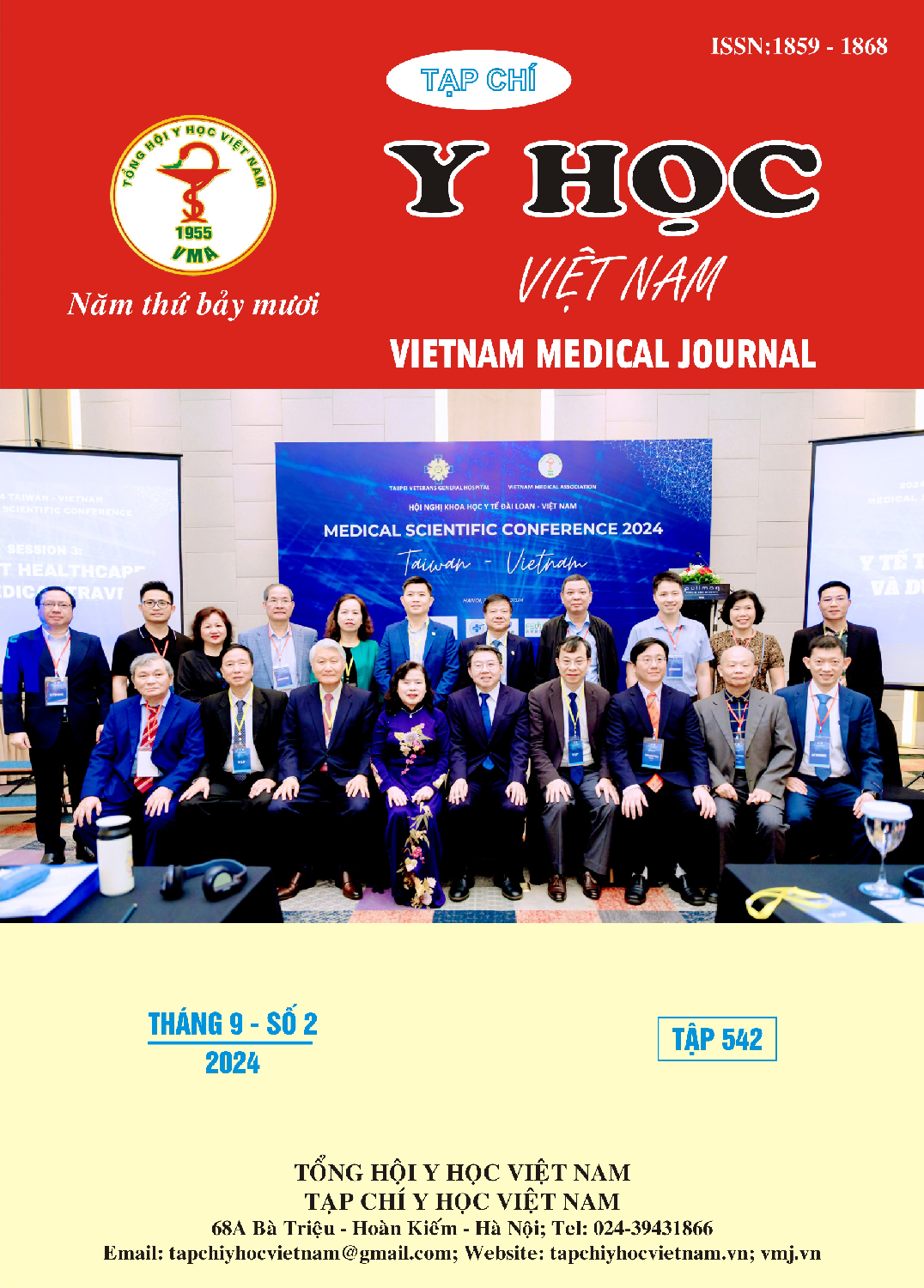PLASMA LEVEL OF LIPOCALIN-2 AND ASSOCIATED FACTORS IN PATIENTS WITH CHRONIC URTICARIA
Main Article Content
Abstract
Objective: To investigate the plasma level of LCN2 and associated factors with the clinical manifestations in patients with chronic urticaria (CU). Subject and method: A case series study was conducted on 40 patients with CU at the Ho Chi Minh City Hospital of Dermato-Venereology from October 2019 to July 2020 and 20 healthy people in the control group. Result: Median and interquartile range (IQR) (25–75th percentile) of plasma LCN2 level in CU patients was 104,3 (88,1-160,9) and in the control group was 107 (75,3-162,4) and there was no significant difference (p = 1,000; Mann-Whitney test) between two groups. There was no significant difference between median and IQR (25–75th percentile) plasma LCN2 level in CU patients with BMI ≥ 23kg/m2 (mean 99.3, IQR (88,6-144,2)) and in CU patients with BMI < 23kg/m2 (mean106.6, UQR (85,4-162,7)). The median plasma level of LCN2 in patients with a positive family history of CU (mean 126,8; IQR 106,6-171,9) was significantly higher than in patients without a family history of CU (mean 95; IQR 77,5-130,3) with p=0.025. Conclusion: The plasma level of LCN2 in the CU patients group had no statistically significant difference from the control group. The median plasma level of LCN2 in patients with a positive family history of CU was significantly higher than in patients without a family history of CU, indicating that this adipokine may be a potential marker of treatment response. Further investigation is needed to provide more insight into the role of LCN2 in the pathogenesis of CU.
Article Details
Keywords
Plasma level of Lipocalin-2, chronic urticaria
References
2. Trinh H. K., Pham L. D., Ban G. Y., et al (2016) Altered systemic adipokines in patients with chronic urticaria. Int Arch Allergy Immunol, 171(2), pp. 102-110.
3. Deng Y., Scherer P. E. (2010) Adipokines as novel biomarkers and regulators of the metabolic syndrome. Annals of the New York academy of sciences, 1212 (2010), pp. E1-E19.
4. Abella V., Scotee M., Conde J., et al (2015), "The potential of lipocalin-2/ NGAL as biomarker for inflammatory and metabolic diseases", Biomarkers, 20(8), pp. 565-571.
5. Chakraborty S., Kaur S., Guha S., et al (2012), "The multifaceted roles of neutrophil gelatinase associated lipocalin (NGAL) in inflammation and cancer", Biochimica et Biophysica Acta, 1826(1), pp. 129-169.
6. Zuberbier T., Aberer W., Asero R., et al (2018), "The EAACI/GA²LEN/EDF/WAO guideline for the definition, classification, diagnosis and management of urticaria", Allergy, 73(7), pp. 1393-1414.
7. Panidis D., Tziomalos K., Koiou E., et al (2010), "The effects of obesity and polycystic ovary syndrome on serum lipocalin-2 levels: a cross-sectional study", Reproductive Biology and Endocrinology, 8(1), pp. 1-8.
8. Elkhidir A. E., Eltaher H. B., Mohamed A. O. (2017), "Association of lipocalin-2 level, glycemic status and obesity in type 2 diabetes mellitus", BMC Res Notes, 10(1), pp. 2-6.
9. Kamata M., Tada Y., Tatsuda A., et al (2012), "Serum lipocalin-2 levels are increased in patients with psoriasis", Clin Exp Dermatol, 37(3), pp. 296-299.
10. Awede B., Adovoekpe D., Adehan G., et al (2018), "Adiponectin, in contrast to leptin, is not associated with body mass index, waist circumference and HOMA‐IR in subjects of a west‐African population", Physiological Reports, 6(11), p. e13718.


